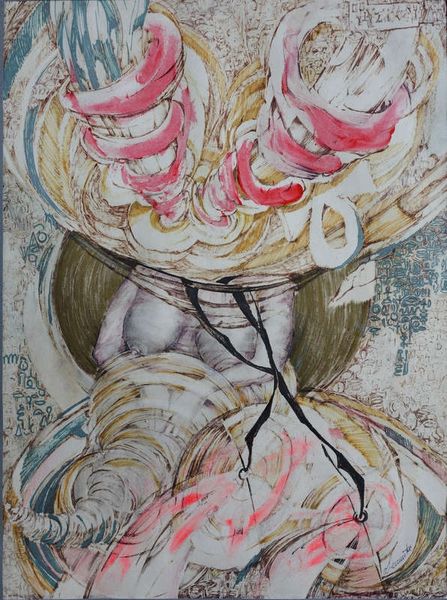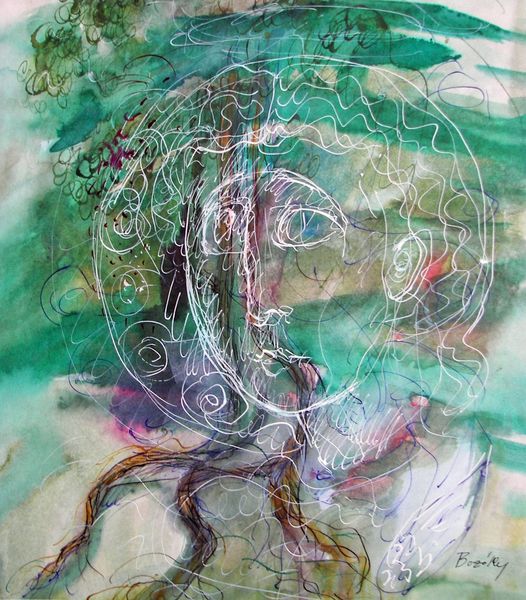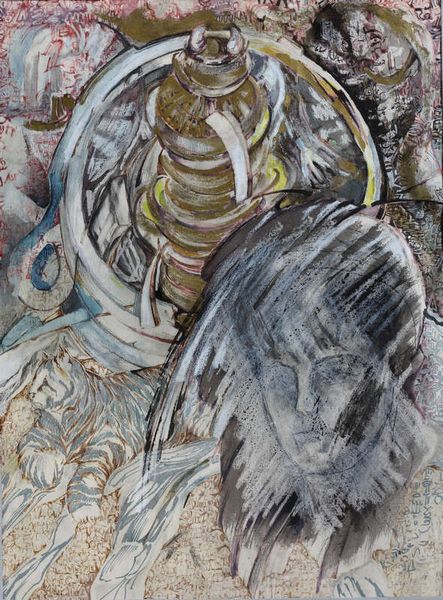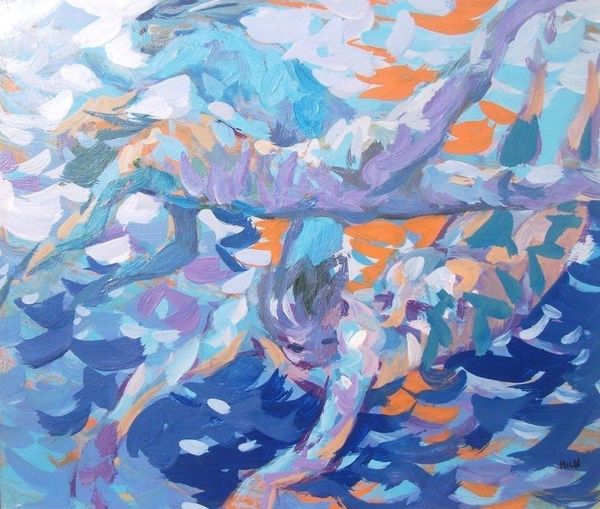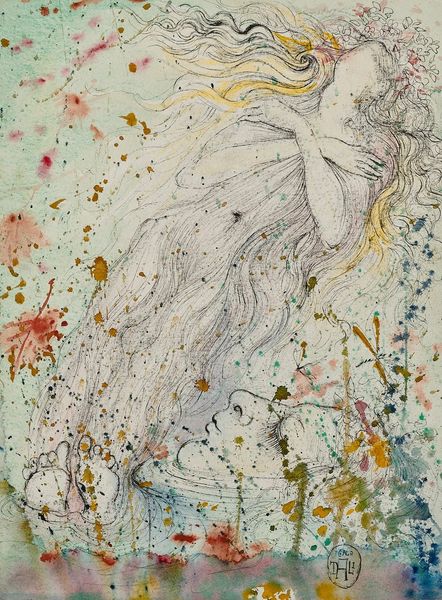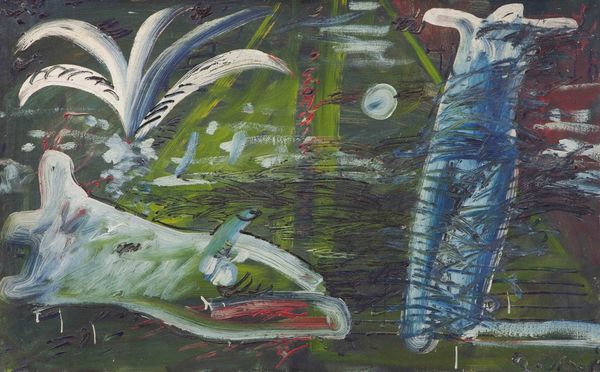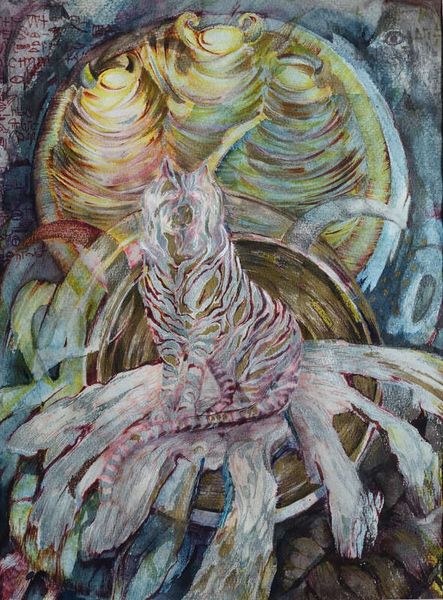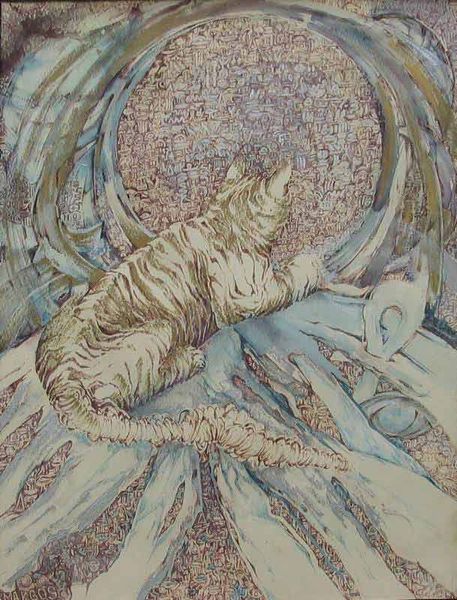
Dimensions: 46 x 34 cm
Copyright: Małgorzata Serwatka,Fair Use
Curator: Immediately, I am struck by the overall fluidity and organic forms in Małgorzata Serwatka's mixed-media work, "Dauka 16," created in 1989. What are your initial thoughts? Editor: Well, first, my eye is drawn to the layering and visible process. You can see where Serwatka built up textures with acrylic paint to create these almost biomorphic shapes. It's like looking at an archeological dig of its own making. Curator: Indeed. There’s a strong element of abstract expressionism here, but I feel like Serwatka pushes beyond mere self-expression. I'm drawn to examine questions of form and identity within this piece, as her use of pale colours, especially that ethereal blue, reminds me of outdated social constructions around femininity. Editor: I agree, and from a materialist lens, her gestures also remind me of action painting and its influence on the commodification of artists during the Cold War, and questions of individual genius. How does the artist position themself in relation to those narratives? I'd be interested to study the pigments, binders, and production processes in the Poland art scene at that moment in history. Curator: The geometric figures add an intriguing dynamic, especially considering Polish art during the late 1980s, which was such a politically and culturally transitional moment, given the waning years of Soviet influence. The interplay between the structure that’s inherent to geometry with the freedom conveyed through line introduces so many narratives of tension, order, and freedom that the Polish Solidarity movement was seeking to gain. Editor: Yes, and perhaps those geometrical features could indicate the availability of or access to specific industrial materials in her studio. And that access reveals so much more. Did Serwatka experience shortages in her supply of materials? How would the artist overcome these barriers to production? This consideration changes everything, doesn’t it? Curator: I believe that viewing art through a feminist perspective helps unearth complex interpretations beyond formalist elements of shape and design. Viewing through those intersectional perspectives encourages understanding how politics impacts every artwork. Editor: Absolutely, and the focus on materiality keeps the analysis honest about economic factors while preventing overly-romantic notions of what making art looks like in specific geographic contexts. Curator: I leave this dialogue with a new awareness of how historical circumstances inform artistic interpretations. Editor: Me too. The social context of material production always gives a deeper understanding to artwork!
Comments
No comments
Be the first to comment and join the conversation on the ultimate creative platform.
